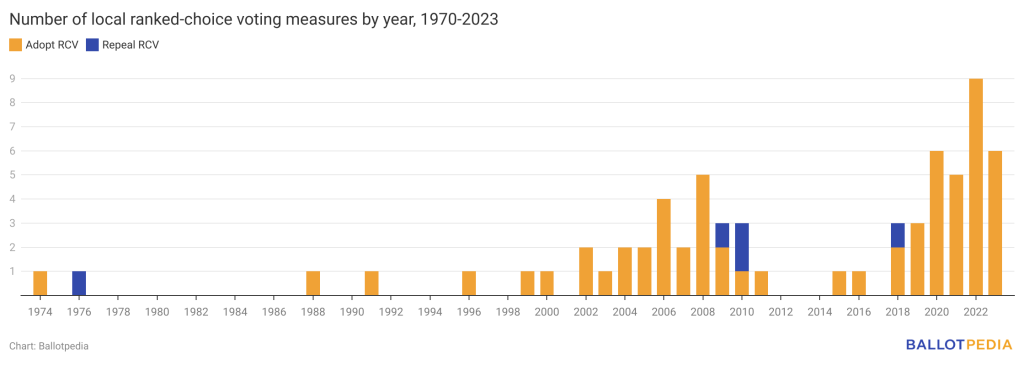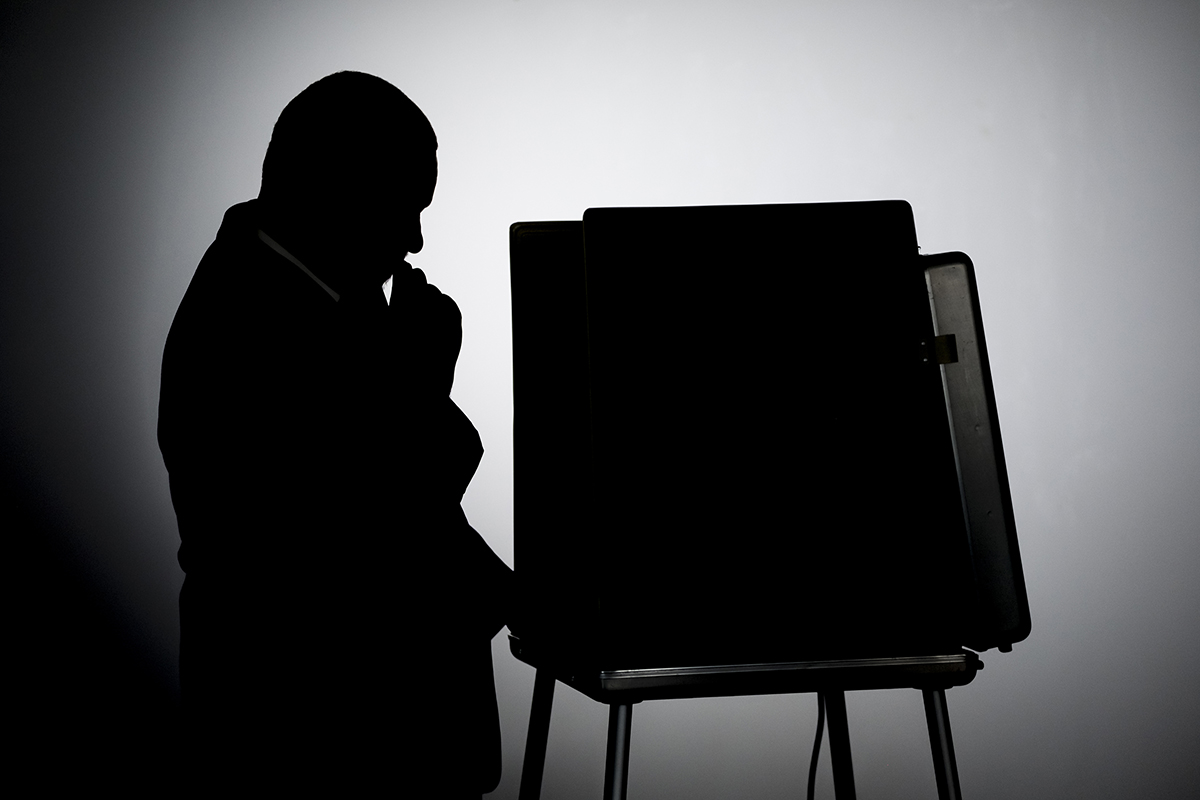The ballot measure has played a role in shaping electoral systems in the U.S., including ranked-choice voting (RCV) for state and local elections.
Since 1914, when voters in Los Angeles, California, rejected Amendment 8 to adopt a multi-winner ranked-choice voting system, there have been more than 150 ballot measures to adopt or repeal ranked-choice voting systems at state and local elections. The first measure that voters approved was in Ashtabula, Ohio, in 1915.
RCV is an electoral system in which voters rank candidates on their ballots. RCV can be used for single-winner elections or multi-winner elections; when used for multi-winner elections, the system has also been called single-transferable vote or proportional representation. These terms were often used to describe multi-winner RCV before 1970.
Voters in four states—Alaska, Maine, Massachusetts, and Nevada—have decided on six statewide ballot measures to adopt ranked-choice voting (RCV). Four were approved, and two were defeated in Alaska (2002) and Massachusetts (2020). Alaska adopted the system via a second ballot initiative in 2020. In 2024, voters in Oregon and Nevada will decide on RCV measures. The Oregon measure is the first legislatively referred state RCV measure. The six previous state measures were all citizen-initiated measures.
In Nevada, voters must approve initiated constitutional amendments, like the RCV measure, at two consecutive general elections to adopt it. It received its first stamp of approval in 2022 with the passage of Question 3 with 52.9% of the vote. Question 3 is the most expensive RCV ballot measure campaign to date with a total of $25.4 million raised between both campaigns. Supporters received $23.0 million. Opponents received $2.4 million.
The top five donors to campaigns supporting ranked-choice voting state ballot measures include Action Now Initiative ($10.6 million), Katherine Gehl ($6.3 million), Kathryn Murdoch ($5 million), Unite America ($4.6 million), and Kenneth Griffin ($3 million). All but Kathryn Murdoch and Kenneth Griffin donated to multiple statewide campaigns.
The top five donors to campaigns opposing ranked-choice voting state ballot measures include Nevada Alliance ($1.7 million), Nevada Conservation League ($310,000), Majority Forward ($250,000), Republican State Leadership Committee ($150,000), and Leadership in Nevada ($60,000). Every donor contributed to a single campaign. The Republican State Leadership Committee contributed to the campaign opposing Alaska Ballot Measure 2 (2020), and the other four contributed to the campaign opposing Nevada Question 3 (2022).

There were 62 local RCV ballot measures in 45 local jurisdictions between 1970 and Aug. 2023. Fifty-seven (57) measures proposed adopting ranked-choice voting, of which 46 (80.7%) were approved and 11 (19.3%) were defeated. Five measures proposed repealing ranked-choice voting. Three (60.0%) were approved, and two (40.0%) were defeated.
From 1970 to 2000, five local jurisdictions decided on seven ballot measures to adopt or repeal ranked-choice voting. Ann Arbor, Michigan, adopted RCV in 1974 but repealed it in 1976. Cincinnati, Ohio, defeated two measures to adopt multi-winner RCV in 1988 and 1991.
Between 2001 and 2011, voters decided on 25 measures in 21 jurisdictions—approving 20 measures (80.0%) and rejecting five measures (20.0%). There were no measures on local ballots again until 2015. Between 2015 and Aug. 2023, voters decided on 30 measures in 26 jurisdictions. Voters approved 25 measures (83.3%) and rejected five measures (16.7%). The year with the greatest number of measures on the ballot was 2022 with nine. All were approved and adopted RCV.

From 1970 to Aug. 2023, California had the most local jurisdictions that decided on ranked-choice voting ballot measures with 11 measures. All of the measures proposed adopting the system. Nine were approved, and two were defeated. Colorado had the second most local jurisdictions deciding on ranked-choice voting measures with 10, followed by Washington with six.
The average yes vote percentage for local ranked-choice voting measures between 1970 and Aug. 2023 was 59.6%, which is 10 percentage points higher than the average yes vote for statewide ranked-choice voting measures at 48.5%.
Additional reading: Ranked-choice voting (RCV)


